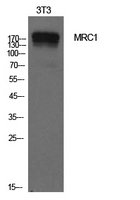![FACS analysis of human stimulated monocytes (GM-CSF + IL-4) using GTX00491-08 Mannose Receptor antibody [15-2] (PE). FACS analysis of human stimulated monocytes (GM-CSF + IL-4) using GTX00491-08 Mannose Receptor antibody [15-2] (PE).](https://www.genetex.com/upload/website/prouct_img/normal/GTX00491-08/GTX00491-08_20191212_FACS_1_w_23053121_963.webp)
FACS analysis of human stimulated monocytes (GM-CSF + IL-4) using GTX00491-08 Mannose Receptor antibody [15-2] (PE).
Mannose Receptor antibody [15-2] (PE)
GTX00491-08
ApplicationsFlow Cytometry, ImmunoFluorescence, ImmunoCytoChemistry, ImmunoHistoChemistry, ImmunoHistoChemistry Paraffin
Product group Antibodies
ReactivityHuman, Mouse, Rat
TargetMRC1
Overview
- SupplierGeneTex
- Product NameMannose Receptor antibody [15-2] (PE)
- Delivery Days Customer9
- Application Supplier NoteFACS: 10 microl reagent / 100 microl of whole blood or 106 cells in a suspension. *Optimal dilutions/concentrations should be determined by the researcher.Not tested in other applications.
- ApplicationsFlow Cytometry, ImmunoFluorescence, ImmunoCytoChemistry, ImmunoHistoChemistry, ImmunoHistoChemistry Paraffin
- CertificationResearch Use Only
- ClonalityMonoclonal
- Clone ID15-2
- ConjugateRPE
- Gene ID4360
- Target nameMRC1
- Target descriptionmannose receptor C-type 1
- Target synonymsCD206, CLEC13D, CLEC13DL, MMR, MRC1L1, bA541I19.1, hMR, macrophage mannose receptor 1, C-type lectin domain family 13 member D, human mannose receptor, macrophage mannose receptor 1-like protein 1, mannose receptor, C type 1-like 1
- HostMouse
- IsotypeIgG1
- Protein IDP22897
- Protein NameMacrophage mannose receptor 1
- Scientific DescriptionThe recognition of complex carbohydrate structures on glycoproteins is an important part of several biological processes, including cell-cell recognition, serum glycoprotein turnover, and neutralization of pathogens. The protein encoded by this gene is a type I membrane receptor that mediates the endocytosis of glycoproteins by macrophages. The protein has been shown to bind high-mannose structures on the surface of potentially pathogenic viruses, bacteria, and fungi so that they can be neutralized by phagocytic engulfment.[provided by RefSeq, Sep 2015]
- ReactivityHuman, Mouse, Rat
- Storage Instruction2°C to 8°C
- UNSPSC12352203
References
- Han GH, Kim SJ, Ko WK, et al. Transplantation of tauroursodeoxycholic acid-inducing M2-phenotype macrophages promotes an anti-neuroinflammatory effect and functional recovery after spinal cord injury in rats. Cell Prolif. 2021,54(6):e13050. doi: 10.1111/cpr.13050Read this paper
- Katara GK, Jaiswal MK, Kulshrestha A, et al. Tumor-associated vacuolar ATPase subunit promotes tumorigenic characteristics in macrophages. Oncogene. 2014,33(49):5649-54. doi: 10.1038/onc.2013.532Read this paper
- Walker PA, Bedi SS, Shah SK, et al. Intravenous multipotent adult progenitor cell therapy after traumatic brain injury: modulation of the resident microglia population. J Neuroinflammation. 2012,9:228. doi: 10.1186/1742-2094-9-228Read this paper

![FACS analysis of human stimulated monocytes (GM-CSF + IL-4) using GTX00491-08 Mannose Receptor antibody [15-2] (PE) and GTX80214 CD11c antibody [BU15] (APC). FACS analysis of human stimulated monocytes (GM-CSF + IL-4) using GTX00491-08 Mannose Receptor antibody [15-2] (PE) and GTX80214 CD11c antibody [BU15] (APC).](https://www.genetex.com/upload/website/prouct_img/normal/GTX00491-08/GTX00491-08_20191212_FACS_2_w_23053121_529.webp)
![FACS analysis of human stimulated monocytes (GM-CSF + IL-4) using GTX00491-08 Mannose Receptor antibody [15-2] (PE). Red: Stimulated Black: Non-stimulated FACS analysis of human stimulated monocytes (GM-CSF + IL-4) using GTX00491-08 Mannose Receptor antibody [15-2] (PE). Red: Stimulated Black: Non-stimulated](https://www.genetex.com/upload/website/prouct_img/normal/GTX00491-08/GTX00491-08_20191212_FACS_3_w_23053121_506.webp)




![FACS analysis of human stimulated monocytes (GM-CSF + IL-4) using GTX00491-06 Mannose Receptor antibody [15-2] (FITC).](https://www.genetex.com/upload/website/prouct_img/normal/GTX00491-06/GTX00491-06_20191212_FACS_1_w_23053121_809.webp)